Set接口
Set接口基本介绍
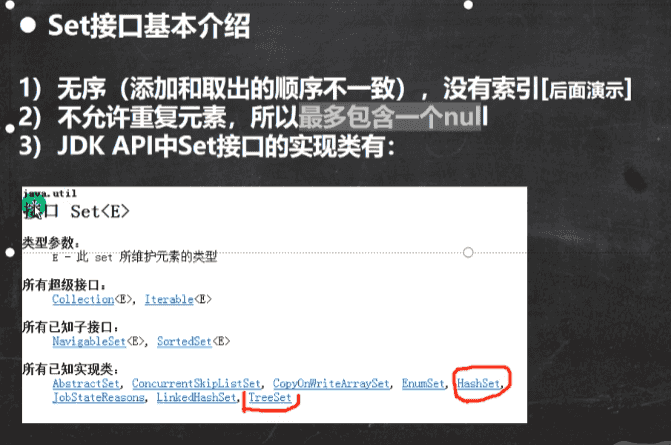
Set接口的常用方法

Set接口的遍历方式

HashSet类的全面说明
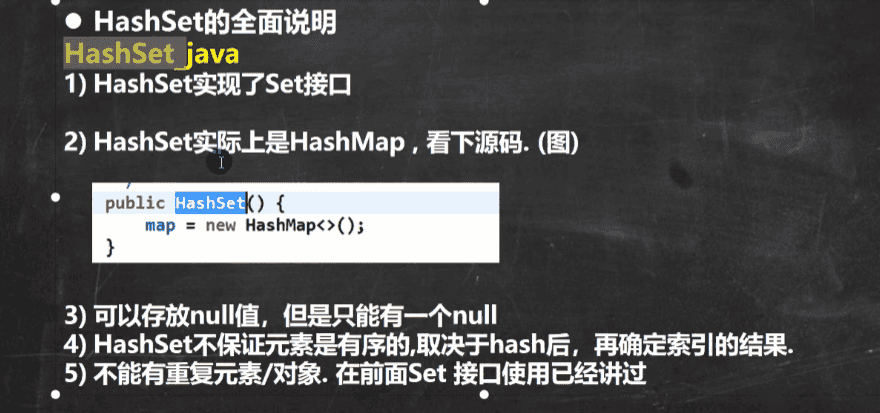
HashSet 底层机制说明

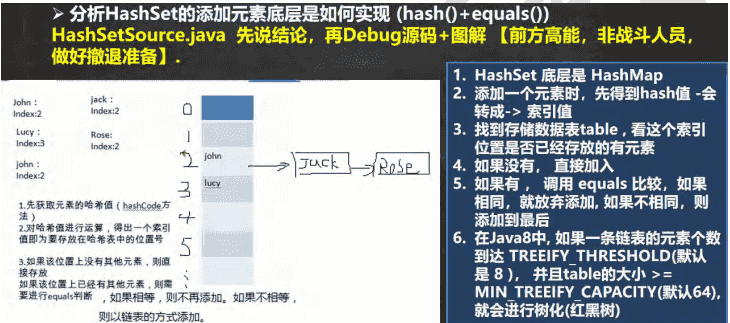
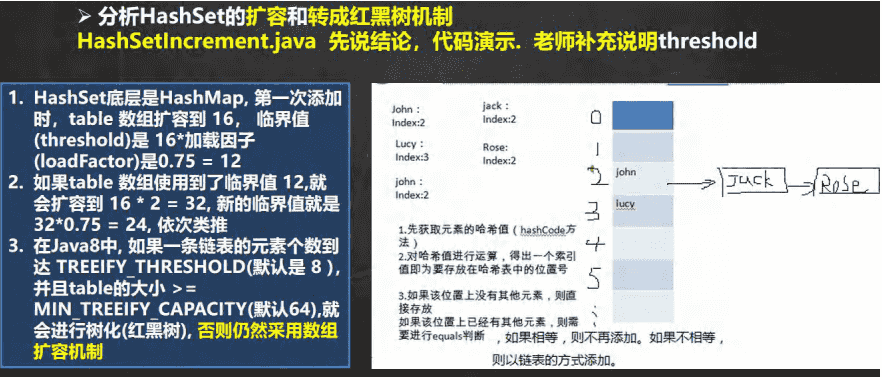
课后练习题

实现代码
package com.quange.test;
import java.util.HashSet;
import java.util.Objects;
public class test06 {
public static void main(String[] args) {
HashSet hashSet = new HashSet();
hashSet.add(new Employee("tom", 2000, new MyDate(2022,1,2)));
hashSet.add(new Employee("sal", 3000, new MyDate(2022,1,3)));
hashSet.add(new Employee("tom", 2000, new MyDate(2022,1,2)));
System.out.println(hashSet);
}
}
class Employee{
private String name;
private int sal ;
private MyDate birthday;
public Employee(String name, int sal, MyDate birthday) {
this.name = name;
this.sal = sal;
this.birthday = birthday;
}
public String getName() {
return name;
}
public void setName(String name) {
this.name = name;
}
public int getSal() {
return sal;
}
public void setSal(int sal) {
this.sal = sal;
}
public MyDate getBirthday() {
return birthday;
}
public void setBirthday(MyDate birthday) {
this.birthday = birthday;
}
// 重写equals 方法,判断name 和 birthday
@Override
public boolean equals(Object o) {
if (this == o) return true;
if (o == null || getClass() != o.getClass()) return false;
Employee employee = (Employee) o;
return Objects.equals(name, employee.name) && Objects.equals(birthday, employee.birthday);
}
// 重写hashCode 方法,判断name 和birthday
@Override
public int hashCode() {
return Objects.hash(name, birthday);
}
// 重写toString方法
@Override
public String toString() {
return "Employee{" +
"name='" + name + '\'' +
", sal=" + sal +
", birthday=" + birthday +
'}';
}
}
class MyDate{
private int year;
private int month;
private int day;
public MyDate(int year, int month, int day) {
this.year = year;
this.month = month;
this.day = day;
}
public int getYear() {
return year;
}
public void setYear(int year) {
this.year = year;
}
public int getMonth() {
return month;
}
public void setMonth(int month) {
this.month = month;
}
public int getDay() {
return day;
}
public void setDay(int day) {
this.day = day;
}
// 重写 equals 方法,判断年月日
@Override
public boolean equals(Object o) {
if (this == o) return true;
if (o == null || getClass() != o.getClass()) return false;
MyDate myDate = (MyDate) o;
return year == myDate.year && month == myDate.month && day == myDate.day;
}
// 重写 hashCode 方法,判断年月日
@Override
public int hashCode() {
return Objects.hash(year, month, day);
}
// 重写 toString 方法
@Override
public String toString() {
return "MyDate{" +
"year=" + year +
", month=" + month +
", day=" + day +
'}';
}
}
输出,第三个对象未能添加
[Employee{name='tom', sal=2000, birthday=MyDate{year=2022, month=1, day=2}}, Employee{name='sal', sal=3000, birthday=MyDate{year=2022, month=1, day=3}}]
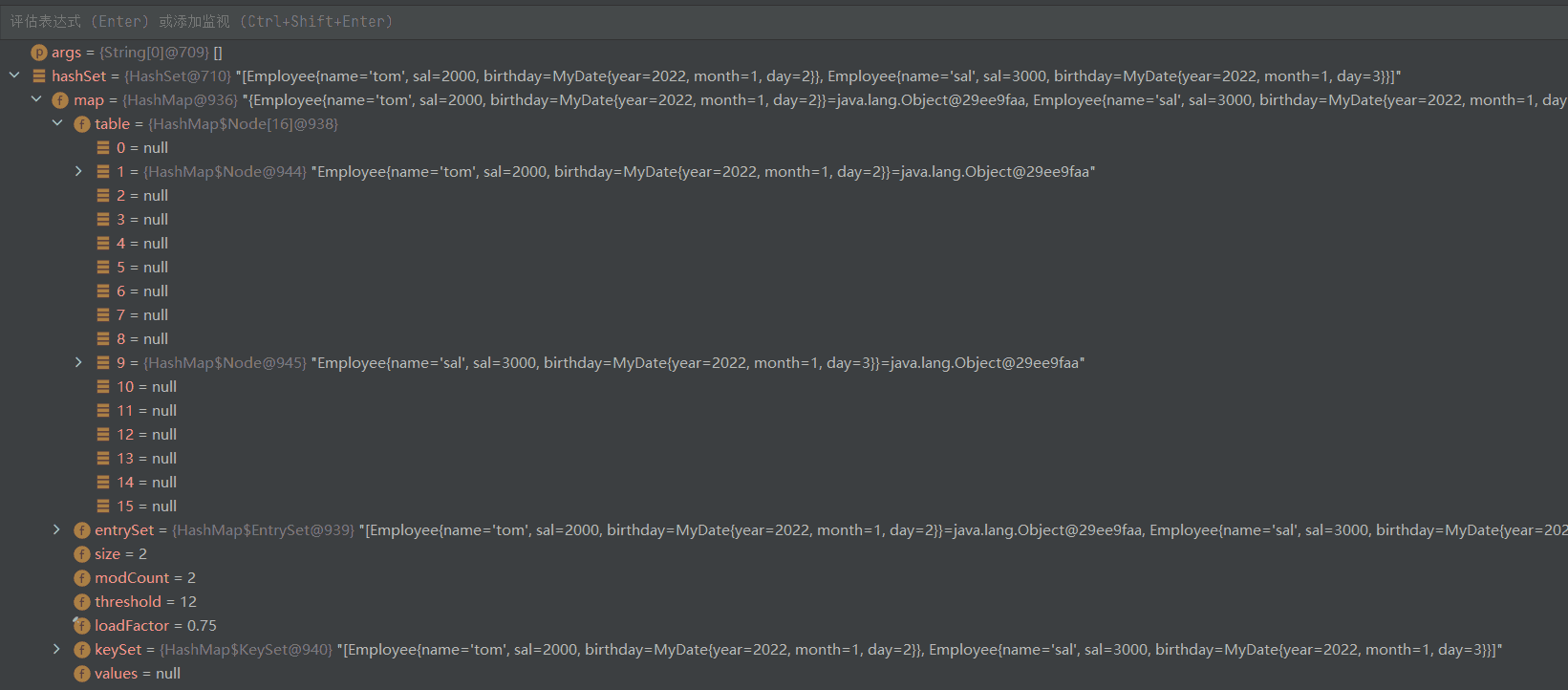




评论区